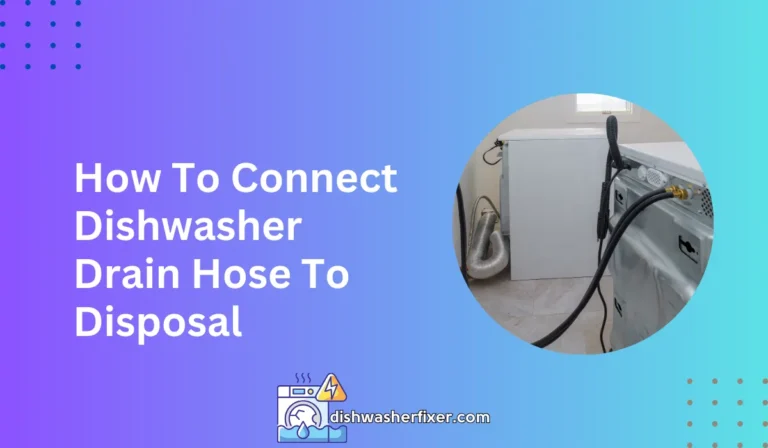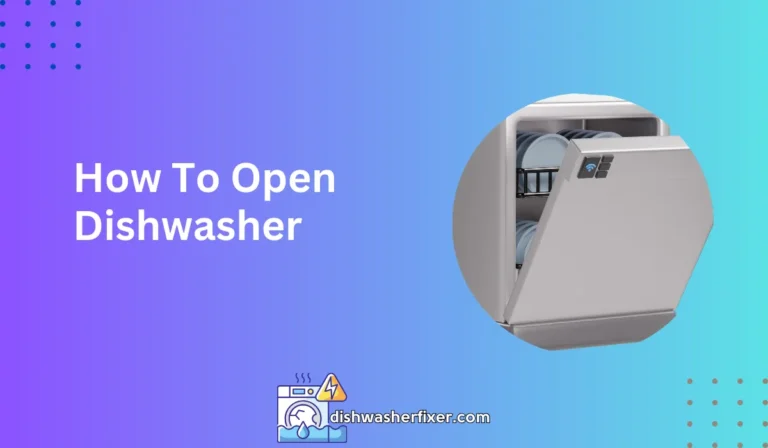How to Connect a Dishwasher to Water Supply: A Step-by-Step Guide
Turn off the water supply. Connect the dishwasher’s water supply line to the hot water valve. Secure it with a compression fitting. Connect the other end to the dishwasher’s water inlet. Check for leaks after turning the water back on.
Preparing for Installation

Gather Necessary Tools and Materials
Before beginning the installation of your dishwasher, it is essential to gather all the necessary tools and materials. You will need an adjustable wrench, a screwdriver, a utility knife, Teflon tape, and a bucket.
Additionally, ensure you have the water supply line specific to your dishwasher model, which usually consists of a flexible stainless steel or copper tubing. Preparation is key to a smooth installation process.
Turn Off the Water Supply
Turning off the water supply is critical to prevent any water damage or spills during the installation.
Locate the main water shut-off valve in your home and turn it to the ‘off’ position. This step will ensure a safe working environment as you connect the dishwasher to the water supply.
Check for an Existing Dishwasher Connection
If you are replacing an old dishwasher, check for an existing dishwasher connection under your sink. This connection should be a separate hot water valve dedicated to the dishwasher.
If there is no such valve, you may need to install one or replace the existing hot water valve with a dual outlet valve.
Measurement and Space Consideration
Measure the available space to ensure that your new dishwasher will fit. Consider the width, depth, and height of the area, and compare these measurements to the dimensions of your dishwasher.
Also, take into account the clearance needed for opening the dishwasher door and loading dishes.
Understanding Your Dishwasher’s Water Supply Requirements
Understanding your dishwasher’s water supply requirements is essential for a correct connection.
Most dishwashers require a hot water supply. It is crucial to read the manufacturer’s instructions to confirm the temperature and pressure specifications for optimal performance.
Connecting the Water Supply Line

Accessing the Dishwasher’s Water Inlet
The dishwasher’s water inlet is typically located on the bottom of the unit. Pull the dishwasher out from its housing to access the inlet clearly. Ensure the area around the inlet is clean and free of debris before beginning the connection.
Attaching the Water Supply Line to the Dishwasher
Attach one end of the water supply line to the dishwasher’s water inlet. Use Teflon tape to wrap the threading of the inlet to ensure a tight seal. Then, using your adjustable wrench, tighten the compression fitting to secure the connection.
Installing an Elbow Fitting for the Water Line
An elbow fitting may be required to connect the water supply line to the dishwasher properly. This fitting should be attached to the inlet so that the water line can be easily routed towards the water supply valve without any kinks or stress.
Securing the Water Supply Line Connection
Once the elbow fitting is in place, align the water supply line with the hot water valve usually located under your kitchen sink.
Attach the line to the valve with another compression fitting, ensuring it is tight and secure. Double-check all connections to ensure they are snug and leak-free.
Final Steps and Testing

Turning on the Water Supply
With all connections in place, carefully turn the water supply back on. Monitor the water flow and ensure that there are no signs of leakage at any connection points. A steady flow without drops or sprays indicates a secure installation.
Checking for Leaks and Proper Water Flow
Once the water is running, inspect the entire length of the water supply line, the connections at the dishwasher inlet, and the valve under the sink.
Use a dry hand or a piece of tissue paper to feel for any wetness. If you find any leaks, turn off the water supply and tighten the connections as needed.
Ensuring the Dishwasher is Level and Secure
It is crucial that your dishwasher is level to function correctly and prevent issues. Use a level to check both front-to-back and side-to-side leveling.
Adjust the dishwasher feet as needed to achieve a balanced position. Once level, secure the dishwasher to the countertop or sides of the cabinets to prevent any movement.
Running a Test Cycle to Confirm Successful Installation
After ensuring that the dishwasher is level and no leaks are present, run a test cycle. This step will help confirm that the dishwasher operates correctly and that the water supply is functioning as expected.
Listen for unusual noises and watch for proper drainage and drying. If everything works as it should, you have successfully installed your dishwasher.
FAQs About Connecting a Dishwasher to Water Supply
How do I turn off the water supply before connecting a dishwasher?
To turn off the water supply, locate the main water valve or the dedicated valve under the sink and turn it clockwise until the flow of water stops.
What is the correct way to connect the water supply line to the dishwasher?
Connect the dishwasher’s water supply line to the hot water valve using a compression fitting, and then attach the other end to the dishwasher’s water inlet.
Do I connect my dishwasher to the hot or cold water supply?
You should connect your dishwasher to the hot water supply to ensure the dishwasher has immediate access to hot water for cleaning.
How do I secure the water supply line to the valve and the dishwasher?
Secure the water supply line to the valve and the dishwasher using a compression fitting, tightening it to ensure a snug and leak-free connection.
How can I check for leaks after connecting the dishwasher to the water supply?
After turning the water supply back on, inspect the connections at the valve and dishwasher inlet for any signs of water leakage.
Final Thoughts
To successfully connect a dishwasher to the water supply, first ensure the water supply is turned off. Attach the water supply line to the hot water valve using a compression fitting for a secure connection.
Then, connect the line to the dishwasher’s water inlet. After installation, turn the water back on and check meticulously for any signs of leakage.





